
Man looking at photo of 1965-66 era protest (Mílvio Perez)

2006
 Speaking of TV, I'm not sure if any of Jstheater's regular or periodic readers have caught the MTV show Yo Momma, hosted and produced by former That 70s Show star Wilmer Valderrama (photo at left, in center, with co-hosts Jason on the left, Sam on the right).
Speaking of TV, I'm not sure if any of Jstheater's regular or periodic readers have caught the MTV show Yo Momma, hosted and produced by former That 70s Show star Wilmer Valderrama (photo at left, in center, with co-hosts Jason on the left, Sam on the right). It all sounded so...novelistic. Kaavya Viswanathan (at right, photo from Playfuls.com) a rising Harvard sophomore, secured a $500,000 two-book contract at age 17, and a Dream Works option, for her first novel How Opal Mehta Got Kissed, Got Wild, and Got a Life*, an autobiographically based narrative about a smart but too-narrowly-focused young Indian-American high school student whose father strategizes to get her into...guess where...Harvard! When I mentioned what I'd heard of Viswanathan's book deal to my graduate fiction class this past winter, they all groaned. All were older than 21 and thus beyond the age of "boy/girl wonderdom" that the publishing industry so fetishizes, and none were at Harvard, the institution whose very name alone sends the New York Times, still one of the major arbiters of (high) literary culture in this country, into sustained paroxysms.
It all sounded so...novelistic. Kaavya Viswanathan (at right, photo from Playfuls.com) a rising Harvard sophomore, secured a $500,000 two-book contract at age 17, and a Dream Works option, for her first novel How Opal Mehta Got Kissed, Got Wild, and Got a Life*, an autobiographically based narrative about a smart but too-narrowly-focused young Indian-American high school student whose father strategizes to get her into...guess where...Harvard! When I mentioned what I'd heard of Viswanathan's book deal to my graduate fiction class this past winter, they all groaned. All were older than 21 and thus beyond the age of "boy/girl wonderdom" that the publishing industry so fetishizes, and none were at Harvard, the institution whose very name alone sends the New York Times, still one of the major arbiters of (high) literary culture in this country, into sustained paroxysms. "The extraordinary appearance of [Roberto] Clemente always helped him to reach those heroic dimensions. He was born as much for baseball as for photographs, busts and statues. That aspect was accentuated with an aristocratic gravity that convinced one as if it were another feature, more than his virile and Apollonian beauty. While the smile of Peruchín ([the Little Bull] Orlando Cepeda) always insinuated that easy-going confidence like my homeboy that went back to his origins in Santurce, back there in the space of the saoco* and Sunoco, Clemente even when he was smiling didn't lower his guard, in his persistence to prove himself, as a Black Puerto Rican baseball player, worthy of the greatest respect. In him there was something tense and fateful, as he hit those three thousand unstoppable balls; it was the Apollonian Kabbalah, the one of an ambition in which no excess fits, neither more nor les. He was a man touched by perfection. Peruchín, by comparison, is pure Dionysian exaltation."
"The extraordinary appearance of [Roberto] Clemente always helped him to reach those heroic dimensions. He was born as much for baseball as for photographs, busts and statues. That aspect was accentuated with an aristocratic gravity that convinced one as if it were another feature, more than his virile and Apollonian beauty. While the smile of Peruchín ([the Little Bull] Orlando Cepeda) always insinuated that easy-going confidence like my homeboy that went back to his origins in Santurce, back there in the space of the saoco* and Sunoco, Clemente even when he was smiling didn't lower his guard, in his persistence to prove himself, as a Black Puerto Rican baseball player, worthy of the greatest respect. In him there was something tense and fateful, as he hit those three thousand unstoppable balls; it was the Apollonian Kabbalah, the one of an ambition in which no excess fits, neither more nor les. He was a man touched by perfection. Peruchín, by comparison, is pure Dionysian exaltation." I saw yesterday that 85-year-old poet Richard Wilbur had received the Poetry Foundation's $100,000 Ruth Lilly Prize. Wilbur is a former US Poet Laureate and two-time winner of the Pulitzer Prize in 1957, for Things of this World, which appeared the same year as Howl, Some Trees, and other notable books of poetry, and in 1989, for his New and Collected Poems, which edged out volumes by Donald Hall and Garrett Hongo. (No Asian-American or Latino-American poet has ever received the Pulitzer Prize in the poetry category.) The editor of Poetry magazine, a former colleague of mine whom I respect quite a bit, Christian Wiman, remarked of the winner that "If you had to put all your money on one living poet whose work will be read in a hundred years, Richard Wilbur would be a good bet." I have been thinking about this repeatedly since I read it, and have to disagree. Strongly. Do (m)any poets nowadays read Richard Wilbur's work? Did they do so 20 years ago? 40? Can anyone--any reader out there, without looking one up--name a book of Richard Wilbur's poems (The Beautiful Changes, his first volume, comes to mind)? Does anyone teach his work? Who would these potential readers 100 years on be?
I saw yesterday that 85-year-old poet Richard Wilbur had received the Poetry Foundation's $100,000 Ruth Lilly Prize. Wilbur is a former US Poet Laureate and two-time winner of the Pulitzer Prize in 1957, for Things of this World, which appeared the same year as Howl, Some Trees, and other notable books of poetry, and in 1989, for his New and Collected Poems, which edged out volumes by Donald Hall and Garrett Hongo. (No Asian-American or Latino-American poet has ever received the Pulitzer Prize in the poetry category.) The editor of Poetry magazine, a former colleague of mine whom I respect quite a bit, Christian Wiman, remarked of the winner that "If you had to put all your money on one living poet whose work will be read in a hundred years, Richard Wilbur would be a good bet." I have been thinking about this repeatedly since I read it, and have to disagree. Strongly. Do (m)any poets nowadays read Richard Wilbur's work? Did they do so 20 years ago? 40? Can anyone--any reader out there, without looking one up--name a book of Richard Wilbur's poems (The Beautiful Changes, his first volume, comes to mind)? Does anyone teach his work? Who would these potential readers 100 years on be? Some readers may remember US Olympic sprinter Shawn Crawford (at right, photo Nick Krug), who'd made his name back in 2003 when he participated in a neo-Darwinian era race (racial) spectacle for Fox's (surprise!) "Man vs. Beast" TV show (I'm not making this up) against a giraffe and a zebra (he beat the first and lost to the second), received the silver medal in the 100 (after a bit of showboating in a prelim) and 4x100 meter races, and the gold in the 200 at the 2004 Athens Summer Olympics. (Al Campanis could be heard jumping up and down in his grave.)
Some readers may remember US Olympic sprinter Shawn Crawford (at right, photo Nick Krug), who'd made his name back in 2003 when he participated in a neo-Darwinian era race (racial) spectacle for Fox's (surprise!) "Man vs. Beast" TV show (I'm not making this up) against a giraffe and a zebra (he beat the first and lost to the second), received the silver medal in the 100 (after a bit of showboating in a prelim) and 4x100 meter races, and the gold in the 200 at the 2004 Athens Summer Olympics. (Al Campanis could be heard jumping up and down in his grave.)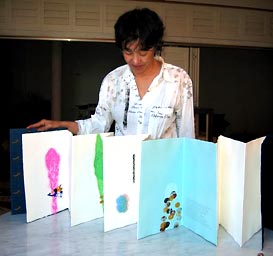 Here's a poem by a poet, Mei-Mei Berssenbrugge, whom I first encountered as an undergraduate (thanks to Ishmael Reed, who invited her to campus and urged us all to go hear her read). I think I said hello, but was too shy to say much else beyond offering praise for poems, which were unlike anything I'd seen up to that point.
Here's a poem by a poet, Mei-Mei Berssenbrugge, whom I first encountered as an undergraduate (thanks to Ishmael Reed, who invited her to campus and urged us all to go hear her read). I think I said hello, but was too shy to say much else beyond offering praise for poems, which were unlike anything I'd seen up to that point. Doug Ireland of Direland was one of the first US journalists to focus on the dire (no pun intended) situation for LGBTs in Iran under that country's fanatical, defiant president, Mahmoud Ahmadinejad, against whom the US may or may not have already initiated a war. Ireland has continued his fine and important reportage on this part of the world, concentrating most recently on the terrible situation gays in Iraq face. Most American reporting on the US has covered the daily bombings, the US military casualties, the nascent (or ongoing, depending upon whose perspective is taken) civil war between the Sunnis and Shiites, or among the Shiite faction, and the overall success or failure of George W. Bush's aims and plans. The situation for LGBT people in Iraq, as for Christians and other minorities, has gotten lost in the media's muddle.
Doug Ireland of Direland was one of the first US journalists to focus on the dire (no pun intended) situation for LGBTs in Iran under that country's fanatical, defiant president, Mahmoud Ahmadinejad, against whom the US may or may not have already initiated a war. Ireland has continued his fine and important reportage on this part of the world, concentrating most recently on the terrible situation gays in Iraq face. Most American reporting on the US has covered the daily bombings, the US military casualties, the nascent (or ongoing, depending upon whose perspective is taken) civil war between the Sunnis and Shiites, or among the Shiite faction, and the overall success or failure of George W. Bush's aims and plans. The situation for LGBT people in Iraq, as for Christians and other minorities, has gotten lost in the media's muddle."I don't want to be gay anymore. When I go out to buy bread, I'm afraid. When the doorbell rings, I think that they have come for me." That is the fear that haunts Hussein, and other gay men in Iraq. They say that since the US-led invasion, gays are being killed because of their sexual orientation.
They blame the increase in violence on the growing influence of religious figures and militia groups in Iraq since Saddam Hussein was ousted. Islam considers homosexuality sinful. A website published in the name of Ayatollah Sistani, Iraq's most revered Shia cleric, says gays should be put to death. "Those who commit sodomy must be killed in the harshest way," says a section of the website dealing with questions of morality. The statement appears on the Arabic section of the website, which is published in the Iranian city of Qom, but not in the English section.
The BBC asked Mr Sistani's representative, Seyed Kashmiri, to explain the ruling. "Homosexuals and lesbians are not killed for practising their inclinations for the first time," Mr Kashmiri said in a response sent via email. "There are certain conditions drawn out by jurists before this punishment can be implemented, which is perhaps similar to the punishment meted out by other heavenly religions." Mr Kashmiri added: "Some rulings that are drawn out by jurists are done so on a theoretical basis. Not everything that is said is implemented."
The BBC failed to note the relationship between the killings of Iraqi gays and the lethal anti-gay pogrom in Iran -- it does not mention that Ayatollah al-Sistani is himself an Iranian, that SCIRI (Supreme Council for the Islamic Revolution in Iraq) is backed by Iran -- its headquarters were in Tehran for more than 20 years during the Saddam Hussein dictatorship -- and that the Badr Corps is financed by Iran. This is common knowlege in Iraq -- indeed, in an important February 17 interview with Le Monde that was ignored by the English-language press, the fact that the salaries of the soldiers of the Badr Corps -- whose death squads are carrying out the "sexual cleansing" campaign of murder of gay Iraqis -- are paid by Iran, was confirmed by Ali Debbagh, a counselor to Grand Ayatollah Ali al-Sistani, a member of the Iraqi parliament's Foreign Affairs Committee, and a university professor specializing in religious political parties. And while the BBC report did mention that "there are widespread concerns that large parts of Iraq's police force are under the control of such groups," it omitted the fact that Badr Corps members in Baghdad and elsewhere wear the uniforms of the official police under the control of the Interior Ministry.The current Iraqi Interior Ministry has come under increasingly withering criticism, both within Iraq and without, for its role in torture and assassinations of Sunnis and some Shiites.
 "¿Quién sabe donde?" This was the title of a talk I once heard Juan Goytisolo (at right, El Navigante.com) give at New York University several years ago. I listened attentively, though I understood only a sliver of it, as I have trouble comprehending the Castilian accent and my grasp of the Spanish idiom was even more rudimentary then than it is today, but what was most important to me was the opportunity to hear a lecture by a writer whose work had played a key role in my intellectual development. (He actually taught during the 1973-74 academic year at NYU, but became regular annual visitor again in the late 1990s to the university's King Juan Carlos I of Spain Center.)
"¿Quién sabe donde?" This was the title of a talk I once heard Juan Goytisolo (at right, El Navigante.com) give at New York University several years ago. I listened attentively, though I understood only a sliver of it, as I have trouble comprehending the Castilian accent and my grasp of the Spanish idiom was even more rudimentary then than it is today, but what was most important to me was the opportunity to hear a lecture by a writer whose work had played a key role in my intellectual development. (He actually taught during the 1973-74 academic year at NYU, but became regular annual visitor again in the late 1990s to the university's King Juan Carlos I of Spain Center.)
Yet [Goytisolo] has remained all but unknown in the United States. This oversight may be explained in part by the difficulty of his fiction. He has continued to write in a densely allusive, high-Modernist style, which makes few concessions to the reader. In happier times, Goytisolo's preoccupation with medieval Islam's impact on Western civilization or the plight of Muslim immigrants in contemporary Europe might have made his work seem arcane to American readers. But in the post-9/11 world, this alternative vision often looks prescient. In "Landscapes of War," a collection of essays on the Muslim world that were first published in El País in the 90's, Goytisolo warns repeatedly that radical Islam is mobilizing a generation that has been impoverished and disenfranchised by the disastrous experiments of Arab governments with nationalism and secular socialism, which merely masked the military dictatorships that underpinned them. As for more theocratic regimes like Saudi Arabia's, Goytisolo compares it with Spain's in the centuries following Ferdinand and Isabella's Reconquista: a society characterized by "intransigent homogeneity," "autistic self-absorption and inquisitorial vigilance," whose New World gold (read oil wealth) is spent not on development or reform but on hounding dissidents and quarantining the nobility and clergy in ever more grandiose palaces.
The West is criticized no less starkly. Goytisolo regards Bush's invasion of Iraq, which he described in a recent essay as "the illegitimate war of an illegitimate president," as the crowning catastrophe in a series of American blunders in the Muslim world, extending from U.S. backing in the 80's of both Saddam Hussein and the Taliban to U.S. support of deeply unpopular and repressive regimes in Egypt, North Africa and the gulf states.
Seventy-six percent of the total said they read poetry. Overall, the highest percentage of people who read poetry are educated white women. ''But if you look just at the percentage of African-Americans,'' said Norman Bradburn, a senior fellow at the center and a professor emeritus at the University of Chicago, who supervised the study, ''as compared to the percentage of whites, a higher percentage of African-Americans--85 percent of those sampled --are likely to read poetry than of whites.''
If you like poetry, according to the study, no matter what your race, there is a better chance that you're athletic, too, and enjoy the company of others. And there isn't necessarily a correlation between having a college degree and being a poetry reader. ''Fifty-six percent of poetry readers have less than a college degree,'' Mr. Bradburn noted.

This spring sees memoirs by a transvestite art director (buttoned-down nerd by day, drag queen by night), a tell-all from the Beatles' publicist; a book about the year in the life of a Catholic seminarian; a cartoon memoir about surviving cancer; Helen "I Am Woman" Reddy on life as a feminist icon; and a memoir by "Maude" daughter and horror queen Adrienne Barbeau.
![[memoirs]](http://online.wsj.com/public/resources/images/MK-AG122A_MEMOI_20060413204938.jpg) |
| From left, new memoirs by horror queen Adrienne Barbeau, taboo-breaking novelist Erica Jong, and writer Augusten Burroughs. |
Publishers say the controversy surrounding James Frey's memoir "A Million Little Pieces" -- which turned out to be filled with fiction about his purported life as a drug addict -- hasn't dimmed interest in the form. Mr. Frey's book, after all, sold more than four million copies and continued to sell even after Oprah Winfrey, who had earlier endorsed the book, denounced it on TV.Hughes attributes the current memoir moment to related trends in American culture, including the fascination with reality TV and pop psychology. I would add that the American public's desire for authenticity and recognition right now, as well as our nationwide self-absorption, narcissicism and passivity also are playing a role.
 Adidas, it seems, is hell-bent on shedding customers as quickly as it can. Customers, that is, who are unwilling to support a company that thinks it's okay to put racist depictions of Asians on its premium "Yellow Series" sneakers. (I'm not making that "yellow" bit up.) But wait, you're saying, the artist who created the graphic is half-Chinese, and the images originally appeared in his graffiti works, and it's all just a joke, so.... It's still racist.
Adidas, it seems, is hell-bent on shedding customers as quickly as it can. Customers, that is, who are unwilling to support a company that thinks it's okay to put racist depictions of Asians on its premium "Yellow Series" sneakers. (I'm not making that "yellow" bit up.) But wait, you're saying, the artist who created the graphic is half-Chinese, and the images originally appeared in his graffiti works, and it's all just a joke, so.... It's still racist.
A new, limited-edition shoe from Adidas-Salomon AG, part of the "Yellow Series" and decorated with the face of a character who has buck teeth, a bowl haircut and slanted eyes, has provoked a heated debate about the lines dividing racism, art and commerce.The character on the shoe is the creation of a San Francisco graffiti artist, Barry McGee, who is half Chinese. McGee, who calls the character Ray Fong after an uncle who died, said the image is based on how the artist looked as an 8-year-old.
"You have to look at it as a piece of artwork," said McGee, 40, who used Ray Fong as a graffiti tag in the late 1990s and later in art installations and catalogue covers. "The way we put it all together, it becomes a collectible as art."
The shoe was released April 1, with 1,000 pairs on sale at a dozen boutiques in San Francisco, New York, Los Angeles, Paris, London, Tokyo, Hamburg and Denmark. It retails for $250 and comes with a graffiti art fanzine.
Since then, several blogs and message boards have been consumed with fervid debate over the shoe, and Asian American organizations have said it evokes damaging and long-standing stereotypes.
Tunison notes the hullabaloo that attended Abercrombie and Fitch's similar imagery and slogans on T-shirts back in 2002. That retailer, which has been involved in multiple controversies and lawsuits surrounding its racist practices and imagery, eventually withdrew the T-shirts from sale. But Tunison also addresses how McGee's mixed racial background, his career as a graffiti artist, and the imagery's original artistic context complicate the issue. When an image, sign or discourse that might be ironic or oppositional or that might contain ironic and oppositional potential in one context is transferred to another, can its original range of meanings possibly inhere and be understood, especially if there is a larger contextual field in which similar imagery has functioned and developed very problematic meanings? No sign operates in a void, as McGee and Adidas surely know, and racist and stereotypical depictions of Asians and Asian-Americans continue to circulate in this society, so the shoes' images function within this larger semiotic economy whether Adidas likes it or not.
But then perhaps this was all a cleverly cynical strategy anyways; at $250, if these sneakers are pulled off the market, they will surely go up in value, to the delight of collectors, McGee, Adidas, and whoever bought a pair and is hawking them on the web. "All day I dream about suckers..."
***
 Nigeria is proposing a law that would make anti-gay fanatics in the US and elsewhere (like Jamaica, as Rod 2.0 points out today) jump for joy: in addition criminalizing gay marriage with a five-year prison term, the law, which president Olusegun Obasanjo proposed and which is expected to pass, would also anyone criminalize attendance at a gay wedding, public same-sexual affection or membership in any LGBT organization, and would apply not only to Nigerian citizens, but to foreigners living on Nigerian soil. 365Gay.com's article says
Nigeria is proposing a law that would make anti-gay fanatics in the US and elsewhere (like Jamaica, as Rod 2.0 points out today) jump for joy: in addition criminalizing gay marriage with a five-year prison term, the law, which president Olusegun Obasanjo proposed and which is expected to pass, would also anyone criminalize attendance at a gay wedding, public same-sexual affection or membership in any LGBT organization, and would apply not only to Nigerian citizens, but to foreigners living on Nigerian soil. 365Gay.com's article saysThe legislation is regarded as the most repressive gay measure in the world.
Last month, before the additional prohibitions were included, and in advance of a state visit to the US by President Obasanjo human rights organizations called for the bill's withdrawal. (story)
In an open letter to Obasanjo the groups, including the International Gay and Lesbian Human Rights Commission and Human Rights Watch, said the proposed law contravenes international law, the African Charter on Human and Peoples’ Rights and undermines Nigeria’s struggle to combat the spread of HIV/AIDS.
As in parts of the Caribbean and Asia, the legacy of Britain's harsh colonial-era anti-sodomy laws unfortunately lives on. I also imagine that the law is Obasanjo's sop to religious and political extremists (especially since homosexuality is proscribed by the Shari'a law that Obasanjo permitted in the country's Muslim north). Since he isn't really addressing the multiple and worsening divisions in the oil-rich but economically challenged country, why not offer up a diversion that will certainly stir up passions and identify an easy scapegoat? No wonder he and President Pretzelcoatl were grinning so fulsomely when he came to visit last month....
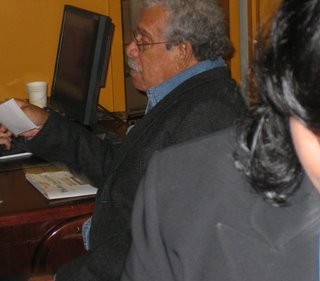
 The Hyatt Foundation, which awards the annual Pritzker Architecture Prize, has named Brazilian architect Paulo Mendes da Rocha (right) its 2006 laureate. Thomas Pritzker, chairman of the Hyatt Foundation, said that the 77-year-old São Paulo resident "has shown a deep understanding of space and scale through the great variety of buildings he has designed, from private residences, housing complexes, a church, museums and sports stadia to urban plans for public space. While few of his buildings were realized outside of Brazil, the lessons to be learned from his work, both as a practicing architect and a teacher, are universal.”
The Hyatt Foundation, which awards the annual Pritzker Architecture Prize, has named Brazilian architect Paulo Mendes da Rocha (right) its 2006 laureate. Thomas Pritzker, chairman of the Hyatt Foundation, said that the 77-year-old São Paulo resident "has shown a deep understanding of space and scale through the great variety of buildings he has designed, from private residences, housing complexes, a church, museums and sports stadia to urban plans for public space. While few of his buildings were realized outside of Brazil, the lessons to be learned from his work, both as a practicing architect and a teacher, are universal.”




 Since April 9, the Festival de Rap Africain has been taking place since this past weekend in Conakry, Guinea (Guinée). This is the festival's fifth year, and the theme for 2006 is "Let's Record Our Children."
Since April 9, the Festival de Rap Africain has been taking place since this past weekend in Conakry, Guinea (Guinée). This is the festival's fifth year, and the theme for 2006 is "Let's Record Our Children." Neg Marrons (France)
Neg Marrons (France) Today, over 1 million immigrants and their supporters rallied across the country, in cities from Atlanta to New York (the photo at left is from the Washington rally, Evan Vucci/AP). My own thoughts on the immigration issue are simple and may be naïve, but here they are:
Today, over 1 million immigrants and their supporters rallied across the country, in cities from Atlanta to New York (the photo at left is from the Washington rally, Evan Vucci/AP). My own thoughts on the immigration issue are simple and may be naïve, but here they are:
Normally this space is taken with my ideas of what are the "Top 5" voting news stories for the week. Today I am going to use this space to talk about what I see as the beginning of a disaster in the making with our elections. This isn't the election fraud that some point to when they talk about the vendors and some elections officials. It's not about recounts or audits. This is a real, get your hands around it, happening problem that will disrupt our election process if we do not do something about it now. While we have been involved in all of our issues about Direct Recording Electronic (DRE or "touch-screen") voting machines or paper ballots the electronic voting machine vendors have been wreaking complete havoc across the country.
So far this year two states have conducted primary elections. In Texas there is at least one candidate who has stepped forward and has challenged the election because of anomalies in vote counts and known voting machine failures. One county's machines counted some votes up to 6 times which resulted in approximately 100,000 more votes being counted than were cast. Though the vendor, Hart Intercivic, initially blamed the problem on human error, they finally had to admit that it was a programming error and not poll workers or voters who had erred. In Illinois some county officials are threatening to withhold final payment of funds on contracts with Sequoia Voting Systems because of failures with their machines that ended with results in the primary not being known for over a week after the voters went to the polls. In both states the involved vendors were very successful in the media with deflecting the blame from their machines to "human errors" or "glitches". However, when you listen to people who were there and who saw and worked through the problems you get a very different picture...
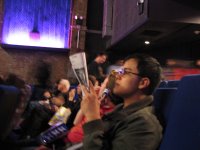 After leaving the John Ashbery reading last night, David and I walked over to the IFC Film Center (at right, formerly the Waverly, now swanked out with an adjoining bar), to see the newest Matthew Barney film, Drawing Restraint 9. We'd gone together to see the final entry in Barney's Cremaster films Cremaster 3 (the one starring sculptor Richard Serra, which also included a giant, lots of Celtic imagery, a car destruction derby in the Chrysler Building, and one of the most ennervating, interminable scores I've ever sat through) a few years back at Film Forum, and I'd concluded that Barney's dreamlike narratives and images were interesting and technical prowess and determination to realize them remarkable, he seemed like someone who was being praised because the critics really didn't understand what the hell he was up to but didn't want to end being on the wrong side of critical history. He also struck me as someone who had access to way too much money. Still, I think some of the Cremaster films, especially Cremaster 4, which stars Ursula Andress, is brilliant, and the idiosyncratic symbolism in the service of a sustained personal mythology that opens out to public interpretation and as a device to link the films together intrigues me quite a bit. So I'm not writing off or hating on Barney by any means.
After leaving the John Ashbery reading last night, David and I walked over to the IFC Film Center (at right, formerly the Waverly, now swanked out with an adjoining bar), to see the newest Matthew Barney film, Drawing Restraint 9. We'd gone together to see the final entry in Barney's Cremaster films Cremaster 3 (the one starring sculptor Richard Serra, which also included a giant, lots of Celtic imagery, a car destruction derby in the Chrysler Building, and one of the most ennervating, interminable scores I've ever sat through) a few years back at Film Forum, and I'd concluded that Barney's dreamlike narratives and images were interesting and technical prowess and determination to realize them remarkable, he seemed like someone who was being praised because the critics really didn't understand what the hell he was up to but didn't want to end being on the wrong side of critical history. He also struck me as someone who had access to way too much money. Still, I think some of the Cremaster films, especially Cremaster 4, which stars Ursula Andress, is brilliant, and the idiosyncratic symbolism in the service of a sustained personal mythology that opens out to public interpretation and as a device to link the films together intrigues me quite a bit. So I'm not writing off or hating on Barney by any means. In the film, Barney and Björk play these (very fashionably accoutered) attractive westerners who get on launches, then board a Japanese whaling ship, where they perform an elaborate Shinto marriage-tea ceremony (as imagined by Barney), which requires them to shave off facial hair, wear octopus undergarments, and in the case of Barney, faun-like horns, and then remain in the tea-ceremony room, which slowly fills with liquified petroleum jelly, which is Barney's preferred sculptural medium. As the room slicks up with the viscous amber fluid, the two lovers perform a horrifying (too mild a word, really) self-transformation. Meanwhile, the crew of the whaling ship sees and seizes a giant piece of ambergris (fake ambergris, or whale vomit, since the real stuff would be astronomically expensive, and not even Barney has those kinds of of millions), and then places it in a huge congealed petroleum sculpture, which is in the form of the "drawing restraint" emblem that Barney has been developing since he was in art school. The more I think about it the more it starts to make sense, at least the inner logic of the film, though the description, as I reread it, sounds almost nonsensical. At any rate, after the transformation, the two lovers have united with nature, and there's a charming shot of two whales following the whaling ship, which was both ironic and almost a bit naive, cutesy and sentimental. Björk in Kennedy's Times piece describes the film as representative of her aim of rejoining with nature, and this comes through, yet any real sense of a non anthropocentric engagement with nature, whales, or, to get back to what the Times was championing, a centrifugal exploration of Japanese culture, anthrological, zoological or otherwise, seemed to be missing, but then with Barney's work, I don't think that's the point. It's all about his (interior) vision, though this time, it's also fused with Björk's.
In the film, Barney and Björk play these (very fashionably accoutered) attractive westerners who get on launches, then board a Japanese whaling ship, where they perform an elaborate Shinto marriage-tea ceremony (as imagined by Barney), which requires them to shave off facial hair, wear octopus undergarments, and in the case of Barney, faun-like horns, and then remain in the tea-ceremony room, which slowly fills with liquified petroleum jelly, which is Barney's preferred sculptural medium. As the room slicks up with the viscous amber fluid, the two lovers perform a horrifying (too mild a word, really) self-transformation. Meanwhile, the crew of the whaling ship sees and seizes a giant piece of ambergris (fake ambergris, or whale vomit, since the real stuff would be astronomically expensive, and not even Barney has those kinds of of millions), and then places it in a huge congealed petroleum sculpture, which is in the form of the "drawing restraint" emblem that Barney has been developing since he was in art school. The more I think about it the more it starts to make sense, at least the inner logic of the film, though the description, as I reread it, sounds almost nonsensical. At any rate, after the transformation, the two lovers have united with nature, and there's a charming shot of two whales following the whaling ship, which was both ironic and almost a bit naive, cutesy and sentimental. Björk in Kennedy's Times piece describes the film as representative of her aim of rejoining with nature, and this comes through, yet any real sense of a non anthropocentric engagement with nature, whales, or, to get back to what the Times was championing, a centrifugal exploration of Japanese culture, anthrological, zoological or otherwise, seemed to be missing, but then with Barney's work, I don't think that's the point. It's all about his (interior) vision, though this time, it's also fused with Björk's. After the film, I felt utterly drained. Part of it was that it was 135 minutes, but it felt like 300 and at times moved glacially. This seemed appropriate during the run-up to and during the tea ceremony, but at times the longueur was just that--and too long. Then there was the wrenching "transformation" scene in the oily tea room. Let me not forget the music. While Drawing Restraint's score was often haunting and memorable, and nothing like Cremaster 3's score, which included unbearable bagpiping and grating metal--it was enough to make a person go completely insane--the repetitiveness and loudness of the music also took their toll. I can take throat-singing in small doses, and Björk's singing and songwriting in large ones, but this film overdid both. One of the best musical bits was the lower octave brass bursts that announced the whaling ship's approach to the ambergris and the beginning of (exciting) action. David concurred in feeling drained--and dazed. We walked around the neighborhood a little bit afterwards to get our bearings back, but as we walked up Hudson St., I felt almost as if I were rising from a very deep and heavy REM sleep. Seeing this film did make me want to see more video art, though, as well as find out what Barney was going to do next with this "restraint" theme.
After the film, I felt utterly drained. Part of it was that it was 135 minutes, but it felt like 300 and at times moved glacially. This seemed appropriate during the run-up to and during the tea ceremony, but at times the longueur was just that--and too long. Then there was the wrenching "transformation" scene in the oily tea room. Let me not forget the music. While Drawing Restraint's score was often haunting and memorable, and nothing like Cremaster 3's score, which included unbearable bagpiping and grating metal--it was enough to make a person go completely insane--the repetitiveness and loudness of the music also took their toll. I can take throat-singing in small doses, and Björk's singing and songwriting in large ones, but this film overdid both. One of the best musical bits was the lower octave brass bursts that announced the whaling ship's approach to the ambergris and the beginning of (exciting) action. David concurred in feeling drained--and dazed. We walked around the neighborhood a little bit afterwards to get our bearings back, but as we walked up Hudson St., I felt almost as if I were rising from a very deep and heavy REM sleep. Seeing this film did make me want to see more video art, though, as well as find out what Barney was going to do next with this "restraint" theme. On Saturday, I decided to venture back over to the City catch the reading of Ashbery's rarely performed play (farce?) The Heroes at the Bowery Poetry Club, mainly because Patricia Spears Jones (at left) and Chris Stackhouse were in it. Unfortunately, it took me so long to get over to the Bowery that by the time I arrived, the staged reading was over. I did get to see Patricia, who said that the performance had gone off with aplomb, and mentioned that her new book is coming out in May (wonderful news!). She also was kind enough to introduce me to two writers whose names and works I'm quite familiar with but had never met, Dara Wier and Vincent Katz. Since I missed the play, I figured I'd catch Ashbery read his long, two-columned poem "Litany," which was originally published in As We Know and which I've always thought of as an experiment that didn't exactly work out, with poet Ann Lauterbach. I'd forgotten our camera at home, so I used my cell-phone camera, which requires the kind of steady hand I lack, but which does take video, so I actually have three micro-clips of Lauterbach and Ashbery reading this work that achieves what Satie aimed for with his music, and which Tan Lin is aiming for with some of his pro(s)etic work, like Blip.Soak: lyric background noise or aural furniture.
On Saturday, I decided to venture back over to the City catch the reading of Ashbery's rarely performed play (farce?) The Heroes at the Bowery Poetry Club, mainly because Patricia Spears Jones (at left) and Chris Stackhouse were in it. Unfortunately, it took me so long to get over to the Bowery that by the time I arrived, the staged reading was over. I did get to see Patricia, who said that the performance had gone off with aplomb, and mentioned that her new book is coming out in May (wonderful news!). She also was kind enough to introduce me to two writers whose names and works I'm quite familiar with but had never met, Dara Wier and Vincent Katz. Since I missed the play, I figured I'd catch Ashbery read his long, two-columned poem "Litany," which was originally published in As We Know and which I've always thought of as an experiment that didn't exactly work out, with poet Ann Lauterbach. I'd forgotten our camera at home, so I used my cell-phone camera, which requires the kind of steady hand I lack, but which does take video, so I actually have three micro-clips of Lauterbach and Ashbery reading this work that achieves what Satie aimed for with his music, and which Tan Lin is aiming for with some of his pro(s)etic work, like Blip.Soak: lyric background noise or aural furniture. Only Lauterbach and Ashbery (at right) both have expressive voices (and Wier and James Tate were also sitting at the tables and I guess were going to spell the two lead voices at some point), and the combination made me think not only of Thomas Glave's, Samuel Delany's and Chris Mazza's double-columned fictions, but of a really amazing fictional piece that one of my most brilliant honors students, Tai L, wrote a year-and-half ago, based on a technique that was used in a youth mental treatment facility. It involved piping two distinct dialogues into different earphones that a young patient had to wear, to supposedly therapeutic effect (I think I'm getting this correct), but as I immediately said to Tai when she told me about it and I read her rendering of it, I thought it might have the opposite effect (especially, now that I think of it, depending upon the content of the texts and the sound and pitch of the voices, etc.). When she performed it with another wonderful former student of mine, Eileen K, the effect was derangingly mesmerizing. The competing voices, combined with the simple lyricism, created a feeling of simultaneous confusion and bemusement. I have written texts of this sort myself, with the aim of creating the very sensations I felt as I heard Tai's and Ashbery's texts, though I hadn't known about Tai's rationale and justification at the time; Ashbery's was one I was quite familiar with.
Only Lauterbach and Ashbery (at right) both have expressive voices (and Wier and James Tate were also sitting at the tables and I guess were going to spell the two lead voices at some point), and the combination made me think not only of Thomas Glave's, Samuel Delany's and Chris Mazza's double-columned fictions, but of a really amazing fictional piece that one of my most brilliant honors students, Tai L, wrote a year-and-half ago, based on a technique that was used in a youth mental treatment facility. It involved piping two distinct dialogues into different earphones that a young patient had to wear, to supposedly therapeutic effect (I think I'm getting this correct), but as I immediately said to Tai when she told me about it and I read her rendering of it, I thought it might have the opposite effect (especially, now that I think of it, depending upon the content of the texts and the sound and pitch of the voices, etc.). When she performed it with another wonderful former student of mine, Eileen K, the effect was derangingly mesmerizing. The competing voices, combined with the simple lyricism, created a feeling of simultaneous confusion and bemusement. I have written texts of this sort myself, with the aim of creating the very sensations I felt as I heard Tai's and Ashbery's texts, though I hadn't known about Tai's rationale and justification at the time; Ashbery's was one I was quite familiar with. Patricia left to get some food, and after a little while, Chris and I decided to head uptown to an opening in Chelsea. The abstract painter Ed Clark, a New Orleans native, was showing new paintings in his "Rebirth" exhibit at the G. R. N'Namdi Gallery at 526 W. 26th St. On the C train heading up there, we ran into poet and critic Geoffrey Jacques (in the center of the image below, Chris is at left) who was also on his way to the show. At left is a general scene at the opening.
Patricia left to get some food, and after a little while, Chris and I decided to head uptown to an opening in Chelsea. The abstract painter Ed Clark, a New Orleans native, was showing new paintings in his "Rebirth" exhibit at the G. R. N'Namdi Gallery at 526 W. 26th St. On the C train heading up there, we ran into poet and critic Geoffrey Jacques (in the center of the image below, Chris is at left) who was also on his way to the show. At left is a general scene at the opening.Clark has always been an inventive and creative artist, experimenting with techniques--his innovative use of the push broom, for example, and his method of working on paper with dry pigment, inspired by the "pouring sand" technique of the Pueblo tribe of the American Southwest.
 Because of Clark's technique, the canvases give the effect of the acrylic's horizontal movement in space, and where there were patches of impasto or layering, vertical mobility. The almost glamorous quality of the beauty created by his choice of colors yields develops greater depth through the visible marks of the painter's action in creating them. Chris mentioned the abstractionist Richard Mayhew; Mayhew's images, if I'm recalling them correctly, float and hover more, and offer a sense of stillness, whereas Clark's seem as if they're heading somewhere, drawing my eye right towards the edges and off the canvas. I thought and could see moods, and music, and movement. I plan to revisit the gallery soon to look at the works again.
Because of Clark's technique, the canvases give the effect of the acrylic's horizontal movement in space, and where there were patches of impasto or layering, vertical mobility. The almost glamorous quality of the beauty created by his choice of colors yields develops greater depth through the visible marks of the painter's action in creating them. Chris mentioned the abstractionist Richard Mayhew; Mayhew's images, if I'm recalling them correctly, float and hover more, and offer a sense of stillness, whereas Clark's seem as if they're heading somewhere, drawing my eye right towards the edges and off the canvas. I thought and could see moods, and music, and movement. I plan to revisit the gallery soon to look at the works again.

 Punks by John Keene
Preorder your copy today! (Out in December 2021!)
Punks by John Keene
Preorder your copy today! (Out in December 2021!)
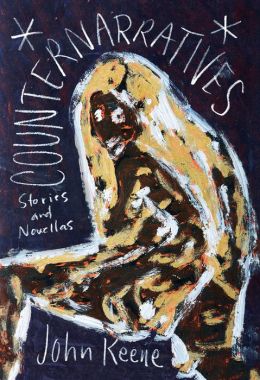 Counternarratives by John Keene
Back in stock, in paperback, so order your copy today!
Counternarratives by John Keene
Back in stock, in paperback, so order your copy today!
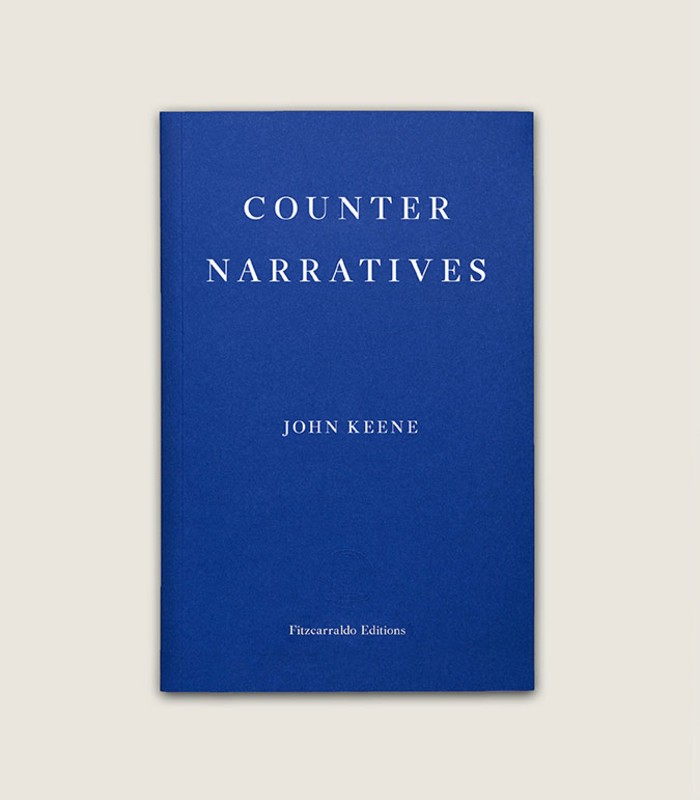 Counternarratives by John Keene (UK Edition)
Order your copy today!
Counternarratives by John Keene (UK Edition)
Order your copy today!
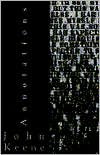 Annotations by John Keene
Get your copy today.
Annotations by John Keene
Get your copy today.
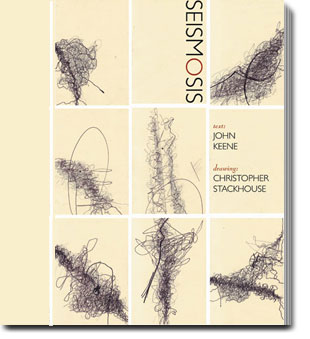 Seismosis by John Keene and Christopher Stackhouse
CURRENTLY OUT OF PRINT (STAY TUNED!)
Seismosis by John Keene and Christopher Stackhouse
CURRENTLY OUT OF PRINT (STAY TUNED!)
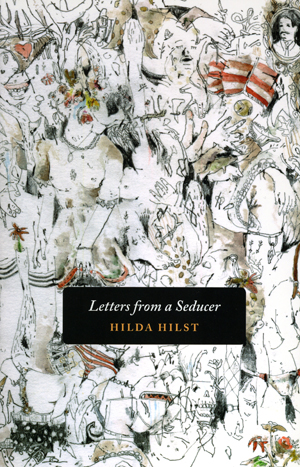 Letters from a Seducer by Hilda Hilst, translated by John Keene, with an introduction by Bruno Carvalho
Get your copy today!
Letters from a Seducer by Hilda Hilst, translated by John Keene, with an introduction by Bruno Carvalho
Get your copy today!
 The Obscene Madame D by Hilda Hilst, translated collaboratively by Nathanaël and Rachel Gontijo Araújo, with an introduction by John Keene
Get your copy today!
The Obscene Madame D by Hilda Hilst, translated collaboratively by Nathanaël and Rachel Gontijo Araújo, with an introduction by John Keene
Get your copy today!